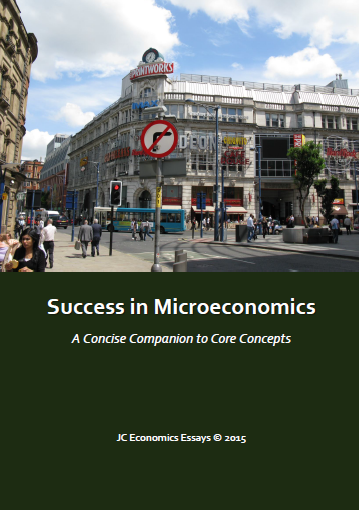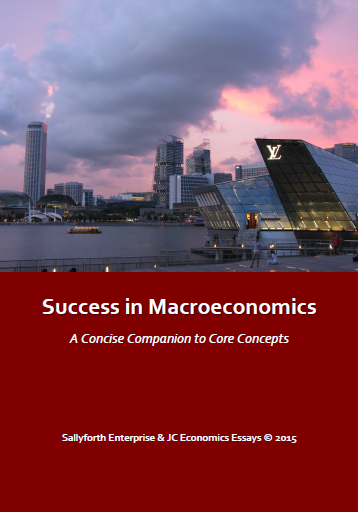“Unhealthy foods should be taxed.” Discuss. [25]
This
paper discusses if a “fat tax” should be imposed. What is a fat tax? Generally, a fat tax is a tax
on the producer of unhealthy foods, for instance fast food or fatty food
producers, and in particular a fat tax is an indirect tax that aims to reduce
the supply of unhealthy food. A fat tax is considered by and levied by the
government. This Economics paper argues that a tax on unhealthy food will raise equilibrium prices
and lower the equilibrium quantity transacted, and hence will save lives by both saving
private individual lives and also by addressing the societal market failure of
negative externalities; yet on the other hand, there are certain other economic
and non-economic perspectives that governments should also consider before
implementing such a tax.
Arguments for a Tax on Unhealthy Foods: Personal
Cost of Obesity – A Fat Tax Saves Lives
First
and foremost, eating unhealthy foods increases the likelihood of obesity, early
death, depression and a whole range of health problems. A fat tax will raise
the price of such foods. Higher prices caused by such a tax would discourage
people from consuming unhealthy foods. It may not stop people eating fatty
foods completely, but this is not the primary aim. Reducing consumption of
fatty and salty foods would have a significant benefit in improving health and
personal wellbeing. Currently, many people from all around the world die from
heart attacks and strokes each year. As well as saving lives, reducing obesity
will also improve consumers’ quality of life. According to the diagram below, a
tax will shift the supply curve to the left, and thus raise the price of the
good and lower the quantity transacted. This translates into less unhealthy
foods consumed.
Arguments for a Tax on Unhealthy Foods: Externalities
of Unhealthy Foods
Unhealthy
eating has an impact, not just on consumers, but also on the rest of society. An
externality is a third party spill-over effect, and can be classified as
negative or positive. Fatty foods, by harming consumers, have massive external
costs to society and as such produce negative externalities. For instance,
there are medical costs for treating obesity, and worse still these explicit
costs also come with opportunity cost, the cost of the next best alternative
forgone, which means that other patients could potentially receive less
attention and other more pressing diseases receive less funding. Also, there
would be lost productivity at work not just due to obesity but also to illness,
premature death, and a whole host of health-related problems that affect society negatively and have to be paid for. Therefore, the
government should collect sufficient taxes from the producers of unhealthy
foods to pay for the external costs that they create. It is the same principle
as to why cigarettes are taxed, because cigarettes cause pollution, and harm or
kill consumers and third parties alike.
While
it can be argued that the external cost of unhealthy foods is not easy to
calculate, due to imperfect information, this is not a reason to avoid having a fat tax. The idea is that at
the moment society is effectively subsidising the consumption of unhealthy
foods, and ultimately it is the taxpayer who has to pay for this in terms of
healthcare, workplace, and productivity costs to society.
Arguments against a Fat Tax: A Tax on the
Poor
On
the other hand, a fax tax could be seen as politically unacceptable, because it
could be perceived as just another scheme to raise government revenue. Thus, a tax
on unhealthy foods should be revenue neutral and not about raising total tax
revenue, but about switching the tax burden. The revenue raised from the fat
tax could be used to subsidise healthy foods, pay for healthcare services, or
reduce other types of taxes.
Also,
a fat tax can be seen as a tax against the poor, who tend to eat fast food or
are unable to afford more expensive healthier food. The argument is that those
on low incomes are more likely to consume unhealthy foods and therefore this
tax will increase inequality as it targets the poor. However, it can be argued
that if a tax on fatty foods saves lives, we should not avoid implementing it
because, in fact, it is the poor who will mostly benefit because their lives
will be saved. If the government is concerned about the impact of a fat tax on
equality, the revenue can be targeted to the poor by redistribution, for
example by transfer payments. Thus, an increase in inequality need not occur
from a fat tax.
Arguments against a Fat Tax: Paternalism
Some
people argue that a fat tax smacks of paternalism (what is sometimes known as
the “nanny state”). Who is the government to tell people what to eat? It would
seem that on the surface the government is telling people what to do. However, the
whole point is that consumers are still free to consume as much salty and fatty
foods as they like. It is just that now consumers have to pay a fairer
reflection of the true cost to society, which means that they have to internalise
the negative externality, the negative harm to society which results from their
health problems caused by such foods. Thus, society has a right to make consumers
pay for the economic cost of unhealthy food. Also due to imperfect information,
consumers may not know the full damage done by unhealthy food. Hence,
paternalism might actually be good for them. As an additional benefit, consumers
will probably live longer, and healthier, and also feel happier.
Arguments against a Fat Tax: Inelastic
Demand
Some
detractors could argue that the demand for fatty foods could be inelastic, and
as such a tax would not reduce the quantity demanded by a lot. This is because,
ceteris paribus, a relatively
inelastic demand curve means that a huge increase in price would lead to a
small fall in quantity demanded. However, while demand may be inelastic for
fatty foods, they will still reduce consumption by a certain amount, and this
is the intended effect. For example, a huge tax on a fast food meal may reduce
consumption by say 30%. Instead of eating ten burgers a week, some consumers may
only consume seven burgers a week after the tax is imposed. This reduction of 30%
will have a big impact on improving the consumers’ health. The aim is not to
stop consumers eating unhealthy foods, but reduce excessive consumption,
because in moderation fatty and salty foods do not cause a fundamental health problem.
Conclusion
In conclusion,
a fat tax should be imposed to save individual lives, and, above all, to reduce
the massive negative externalities of illness and lowered productivity imposed
upon society. The fat tax will force consumers to internalise the negative
externalities whilst allowing them to enjoy, in moderation, fast food, and
therefore in the final analysis unhealthy foods should indeed be taxed.
JC Economics Essays: Tutor's Comments - This Economics paper is about an interesting and current topic that many countries worldwide have discussed: should they implement a fat tax, or a tax on unhealthy foods? How should this fat tax be implemented? This essay makes interesting and easy reading, and covers a lot about inequality and other related issues, that you should definitely study and write about during an Economics examination on this topic of the fat tax. However, my usual tutor's comment applies: other than a diagram or two, how would you make this paper better? What would you write differently here? What other Economics materials and points could you add in to make this Economics paper better? Remember to give it a good, critical viewpoint as well. As an Economics tutor, one major improvement would be that the conclusion could be a little bit more evaluative and considered - which means that the student should have an opinion (or two) and a justification that weighs up arguments, and is nuanced, balanced, and perhaps even "personalised". Thanks for reading, and do give this serious thought!



